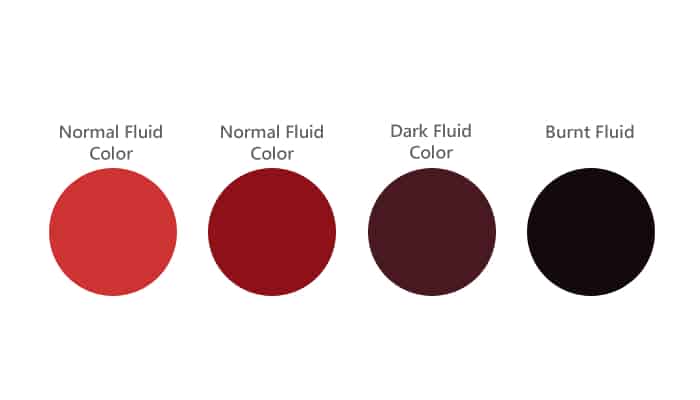Understanding Your Transmission Fluid
When it comes to maintaining your 2017 Acura TLX, one of the most critical components to keep an eye on is the transmission fluid. This fluid plays a vital role in ensuring your vehicle operates smoothly and efficiently. Let’s dive into the specifics of what you need to know about the transmission fluid for your TLX.
Manufacturer’s Recommendations
| Popular posts |
|---|
| What to do to prolong the life of your manual gearbox |
| Automatic transmission: what it is, how it works |
For the 2017 Acura TLX, the manufacturer recommends using Honda ATF DW-1 transmission fluid. This fluid is specially formulated to meet the unique demands of Honda and Acura vehicles, ensuring optimal performance and longevity of your transmission system.
Why Honda ATF DW-1?
Using the recommended transmission fluid is crucial for several reasons:
- Compatibility: Honda ATF DW-1 is designed specifically for Honda and Acura transmissions, ensuring it provides the right viscosity and performance characteristics.
- Performance: This fluid offers excellent thermal stability, which is essential for maintaining performance, especially under heavy loads or during extreme temperatures.
- Protection: It contains additives that help protect against wear and tear, corrosion, and oxidation, extending the life of your transmission.
Specifications of Honda ATF DW-1
Understanding the specifications of the transmission fluid can help you make informed decisions about your vehicle’s maintenance. Here are the key specifications for Honda ATF DW-1:
- Viscosity: The fluid has a viscosity rating that ensures it flows easily at low temperatures while maintaining thickness at high temperatures.
- Friction Characteristics: The fluid is engineered to provide optimal friction for smooth shifting, which is crucial for the performance of your automatic transmission.
- Compatibility with Seal Materials: Honda ATF DW-1 is designed to be compatible with the seal materials used in Honda and Acura transmissions, reducing the risk of leaks.
Where to Find Honda ATF DW-1
You can find Honda ATF DW-1 at various locations:
- Authorized Dealerships: The most reliable source is your local Acura dealership, where you can purchase the fluid directly.
- Auto Parts Stores: Many auto parts retailers carry Honda ATF DW-1, but always check the label to ensure it meets the specifications.
- Online Retailers: Websites like Amazon or specialized auto parts sites often have this fluid available for purchase.
Final Thoughts on Transmission Fluid
Using the correct transmission fluid is not just a recommendation; it’s a necessity for the health of your 2017 Acura TLX. By sticking to Honda ATF DW-1, you ensure that your vehicle operates as intended, providing you with a smooth and reliable driving experience. Always refer to your owner’s manual for specific details and stay informed about your vehicle’s needs.
Recommended Oil Brands for Your Transmission Fluid
When it comes to maintaining your 2017 Acura TLX, choosing the right transmission fluid is crucial. While Honda ATF DW-1 is the manufacturer-recommended fluid, many owners and automotive enthusiasts have shared their experiences with alternative brands that meet or exceed the specifications. Here’s a rundown of some popular oil brands based on feedback from forums and owner reviews.
Honda ATF DW-1
Before diving into alternatives, it’s important to highlight Honda ATF DW-1 again. This is the go-to fluid for many TLX owners, and for good reason. It’s specifically designed for Honda and Acura vehicles, ensuring compatibility and performance. Many owners report smooth shifting and reliable performance when using this fluid.
Alternative Brands
While Honda ATF DW-1 is the safest bet, some owners have had positive experiences with alternative brands. Here are a few that have been frequently mentioned in forums:
- Valvoline MaxLife ATF: This fluid is known for its versatility and compatibility with multiple vehicle makes. Many Acura owners have reported that it provides smooth shifting and excellent protection against wear. It’s a synthetic blend that meets the necessary specifications for Honda vehicles.
- Mobil 1 Synthetic ATF: Mobil 1 is a well-respected name in the automotive industry. Their synthetic ATF is praised for its high performance and stability in extreme temperatures. Owners have noted improved shifting performance and overall transmission health when using this fluid.
- Castrol Transmax Import Multi-Vehicle ATF: This fluid is designed for import vehicles and meets the specifications required for Honda and Acura transmissions. Users have reported that it works well in their TLX, providing smooth operation and good protection against wear.
- Royal Purple Max ATF: Known for its high-performance synthetic oils, Royal Purple’s Max ATF is another alternative that has received positive feedback. Owners appreciate its ability to enhance shifting performance and its protective qualities, especially in high-stress driving conditions.
Owner Feedback and Experiences
Many Acura TLX owners have shared their experiences on forums, discussing the pros and cons of various transmission fluids. Here are some common themes that emerge from these discussions:
- Performance: Owners often emphasize the importance of smooth shifting. Many report that switching to synthetic alternatives like Mobil 1 or Valvoline has noticeably improved their shifting experience, particularly during acceleration.
- Temperature Resistance: Several users have noted that synthetic fluids tend to perform better under extreme temperatures. This is particularly relevant for those living in areas with harsh climates, where conventional fluids may break down faster.
- Longevity: Many users have mentioned that synthetic fluids not only perform better but also last longer, reducing the frequency of fluid changes. This can be a significant advantage for owners looking to minimize maintenance costs.
- Cost vs. Quality: While some owners prefer sticking to Honda ATF DW-1 for peace of mind, others are willing to experiment with alternatives that offer better value for money. Feedback suggests that many of the alternative brands provide comparable performance at a lower price point.
Final Thoughts on Oil Brands
Choosing the right transmission fluid for your 2017 Acura TLX can significantly impact your vehicle’s performance and longevity. While Honda ATF DW-1 remains the top recommendation, alternative brands like Valvoline, Mobil 1, Castrol, and Royal Purple have garnered positive feedback from owners. Always consider your driving conditions and personal preferences when selecting a fluid, and don’t hesitate to share your experiences with fellow TLX owners in the community.
Change Interval for Transmission Fluid
Maintaining your 2017 Acura TLX includes regular transmission fluid changes to ensure optimal performance. Understanding the recommended change intervals and the nuances of partial transmission oil changes is essential for every vehicle owner.
Recommended Change Interval
For the 2017 Acura TLX, the general recommendation for changing the transmission fluid is every 60,000 miles (approximately 96,560 kilometers) . However, this can vary based on driving conditions and habits. Here are some factors to consider:
- Driving Conditions: If you frequently drive in heavy traffic, tow heavy loads, or operate in extreme temperatures, you may need to change the fluid more often.
- Driving Style: Aggressive driving can lead to increased wear on the transmission, necessitating more frequent fluid changes.
- Fluid Condition: Regularly checking the condition of your transmission fluid can help you determine if it needs to be changed sooner. Look for discoloration or a burnt smell.
Partial Transmission Oil Changes
In many cases, a full transmission fluid change requires removing the transmission from the vehicle, which is not always practical or necessary. This is where partial transmission oil changes come into play.
What is a Partial Transmission Oil Change?
A partial transmission oil change involves draining a portion of the old fluid and replacing it with new fluid. This method is often more accessible and can be done without extensive disassembly. Here are some key points:
- Accessibility: Partial changes can typically be performed during routine maintenance, making it easier for owners to keep their transmission fluid fresh.
- Cost-Effective: This method is generally less expensive than a full fluid change, as it requires less labor and time.
- Frequency: Many owners opt for partial changes every 30,000 miles (approximately 48,280 kilometers) to maintain fluid quality without the need for a full service.
Justification for Partial Changes
Statistical data and expert opinions support the effectiveness of partial transmission fluid changes. According to the Automatic Transmission Rebuilders Association (ATRA), regular maintenance, including fluid changes, can significantly extend the life of your transmission. They recommend that even partial changes can help remove contaminants and maintain fluid quality.
Additionally, a study published by the Society of Automotive Engineers (SAE) indicates that maintaining clean transmission fluid can reduce wear on internal components, leading to improved performance and longevity. This is particularly relevant for vehicles like the Acura TLX, which rely on smooth shifting for optimal operation.
By opting for partial changes at regular intervals, you can help ensure that your transmission remains in good condition without the need for a full fluid replacement every time. This approach balances maintenance needs with practicality, allowing you to keep your TLX running smoothly.
What Color Should Transmission Fluid Be?


